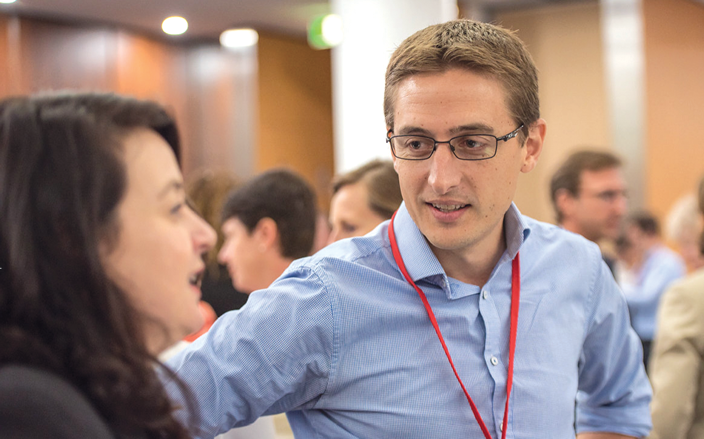
Andrew Cornwall is HSIE and Learning Technology Coordinator at St Bede’s Catholic College in the Hunter Valley. As Learning Technology Coordinator, Andrew’s role has been to coordinate how the school has rolled out technology and build a culture around effective use of technology for teaching and learning, placing him squarely in the centre of the dramatic unfolding of online remote learning.
Prior to joining St Bede’s in 2018 as one of the foundation staff members, Andrew was an Education Officer for Learning Technology in the Maitland-Newcastle Catholic Schools Office, and is a Highly Accomplished Lead Teacher and Microsoft Innovative Educator Expert.
Hazy memories
When asked to recall the atmosphere in the school when the realities of the scope of the pandemic became apparent, Andrew laughed.
“I had a bit of an accident right on the announcement that the school was going to go remote, and I ended up with a pretty serious concussion and a half dozen stitches in my head. So my recollections are somewhat vague for that 24 or 48 hours,” he said.
“When our staff gathered to go through what needed to happen to prepare, I was there with a bandage wrapped around my head and my face looking pretty awful and swollen, trying to make sure all the staff were ready to go for remote learning.”
He said that there were understandable anxieties being felt by staff, and that was felt by colleagues in other schools. But while the health concerns were being felt universally, at St Bede’s they felt equipped with the technology tools necessary to move forward effectively.
Shifting online
St Bede’s is one of the few schools in the region with a policy of bringing your own specified device, a decision Andrew thanks his principal for supporting. This meant that students were all working off a standardised laptop, enabling teachers to confidently and effectively plan programs and activities. This enabled the use of the full suite of tools available in Microsoft Teams, including: video calls, quizzes, short video question and answer submissions and other rich media tasks. This is compared to other schools where they couldn’t necessarily rely on the technology and sometimes were required to plan activities for the lowest common denominator.
With the worst of the pandemic now hopefully behind us, Andrew is enthused by the prospect of interrogating some of the rich data and information that has come from this technology experiment. One trend was that a number of students who previously struggled with their learning suddenly seemed to find their feet in an online learning environment.
“This may be because we were able to personalise their learning really effectively in a digital format, or simply just the removal of the distractions and anxieties associated with classrooms really supported their learning.”
What they also found was a small percentage of students who, whether it was due to issues at home or otherwise, found it difficult to remain engaged with learning. This raised questions for teachers about those students and their learning when back in the classroom.
“Is this something we need to investigate? Is it just presentee-ism? That speaks to what we’re hearing around student voice and engagement in the broader educational dialogue.
Reflecting on the change
Andrew says his big takeaway from this period of time has been that technology is often not addressed by schools, until it’s a problem.
“One of the things I’m always trying to focus on is building capacity, so that when things happen, we’re ready for these kinds of eventualities.
“We were able to be really agile going into and coming out of this period because we did nothing that we weren’t already doing; we just changed the nature of how we were doing it. And that required a lot of early training.
“Day in and day out many schools deal with the challenges of getting people up to speed with technology. If it’s just the way you do things, it’s surprising just how effective it can be.”







































































































































